Cats have long fascinated humans with their unparalleled agility and grace. One of the most intriguing aspects of feline dexterity is their ability to land on their feet when they fall. This remarkable skill seems almost magical, but it is rooted in a complex blend of biology and physics. This article delves into the science behind how cats always manage to land on their feet, also known as the righting reflex.
Anatomy of a Feline: Built for Agility
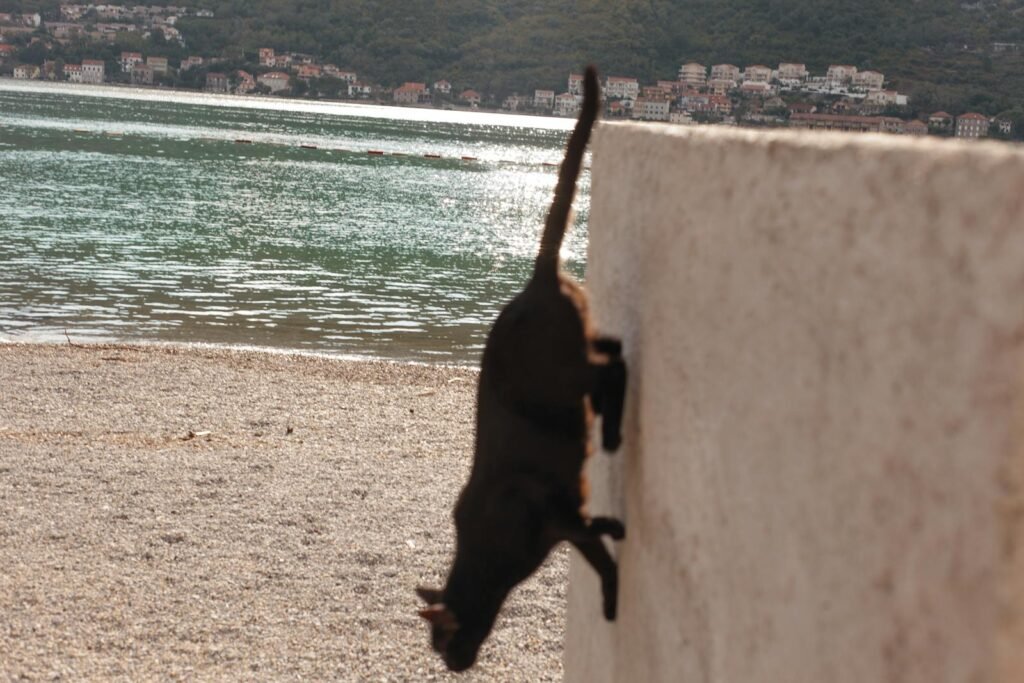
The cat’s body is naturally designed for flexibility and speed, which contributes to their righting reflex. Unlike humans, cats have a highly flexible spine, with more vertebrae than most mammals. This increased number of vertebrae allows cats to rotate their bodies in mid-air more effectively. Additionally, their lack of a collarbone provides a greater range of motion in their front limbs, aiding in their ability to twist their body. This anatomical structure is crucial for the cat’s aerial acrobatics.
The Righting Reflex: Nature’s Design for Survival

The righting reflex is an innate ability present in kittens as young as three weeks old. This complex process involves the coordination of multiple body systems to ensure a safe landing. When falling, a cat will first determine which way is up and then rotate its head to align with the ground. This head movement is the initial step in the righting process and triggers the rest of the body to follow suit.
Role of the Inner Ear: Equilibrium and Orientation
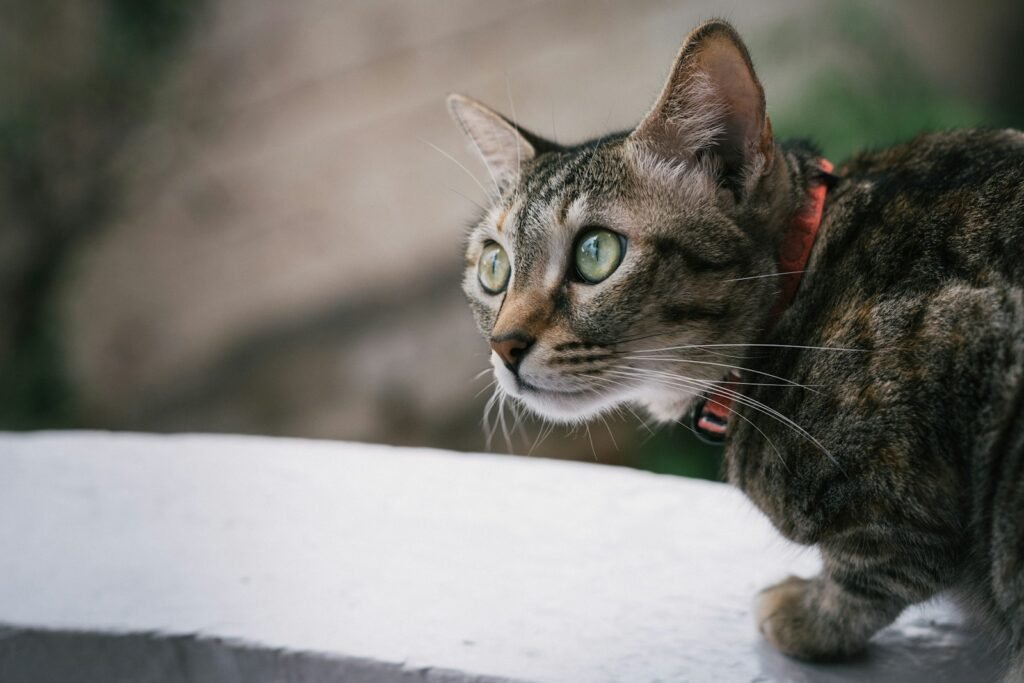
A cat’s inner ear plays a vital role in the righting reflex. The vestibular system, located within the ear, helps the cat maintain balance and spatial orientation. This system detects changes in position and motion, sending signals to the brain to initiate corrective movements. The efficiency of the vestibular system allows cats to make rapid adjustments during a fall, ensuring they land feet-first.
Tactile Hair: The Whisker’s Guidance
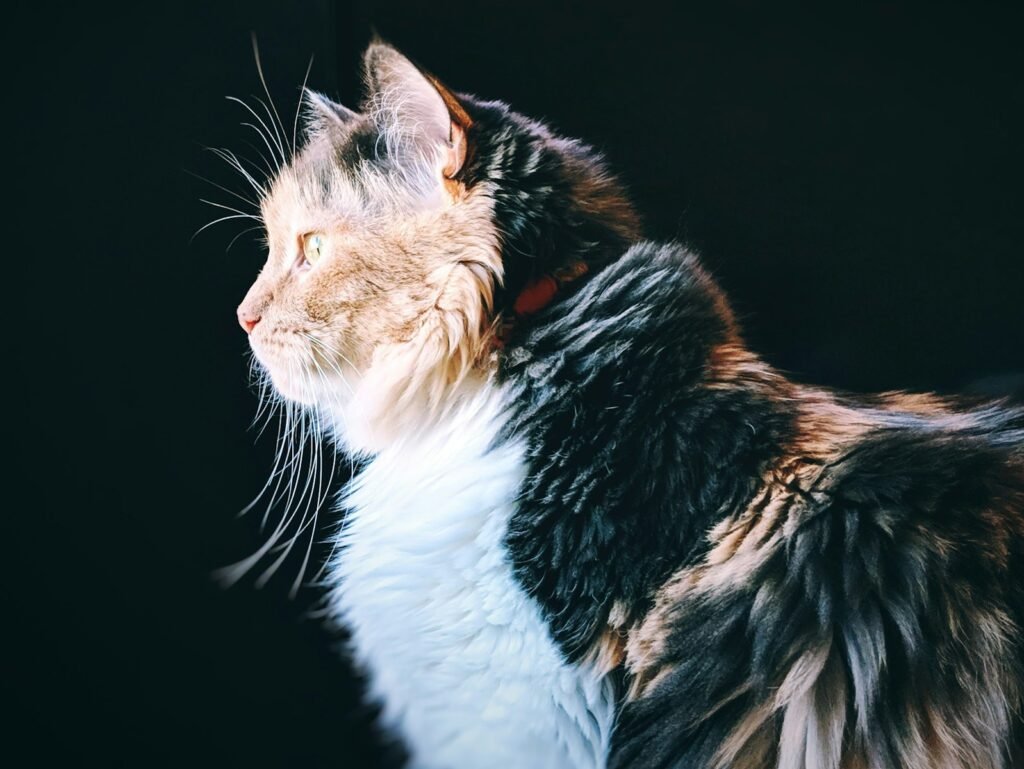
Whiskers, or vibrissae, are another important tool in a cat’s sensory arsenal. These specialized hairs provide valuable information about their surroundings. While primarily used for navigation, the feedback from their whiskers can also aid in balance and landing orientation during a fall. This subtle input helps a cat fine-tune its landing strategy.
Physics in Play: Conservation of Angular Momentum
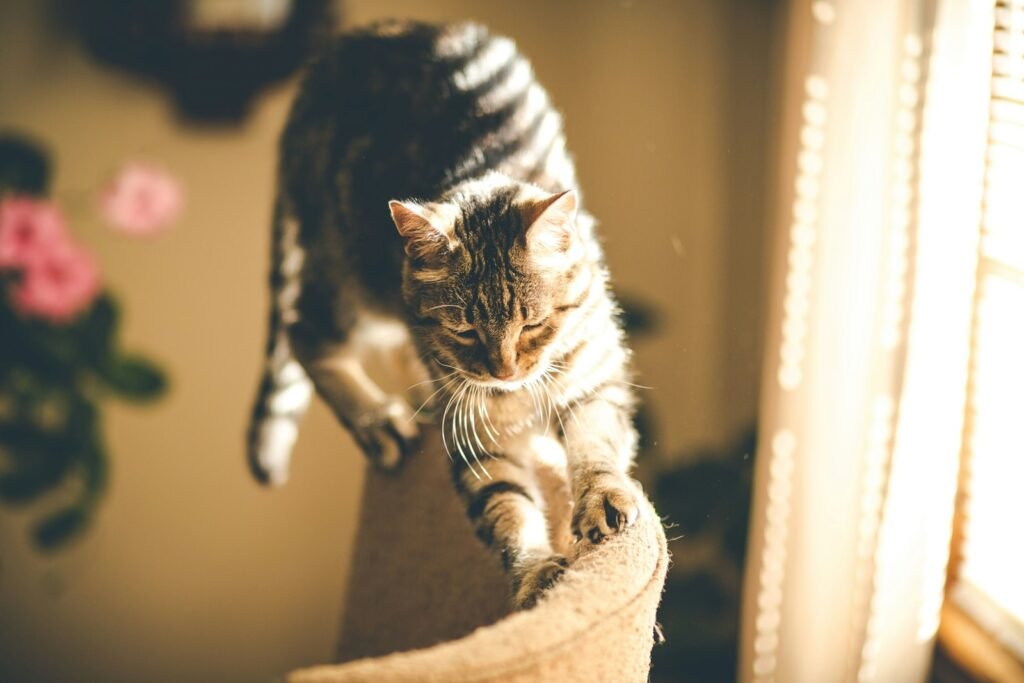
The concept of conservation of angular momentum is crucial in understanding a cat’s ability to right itself. Cats have the ability to twist various parts of their body independently. By tucking their front feet in and extending their back legs, they alter their body shape and distribution of mass. This action changes their moment of inertia, allowing them to rotate their upper body quickly in one direction and their lower body in the opposite direction, without breaking any laws of physics.
Managing Terminal Velocity: The Perfect Landing
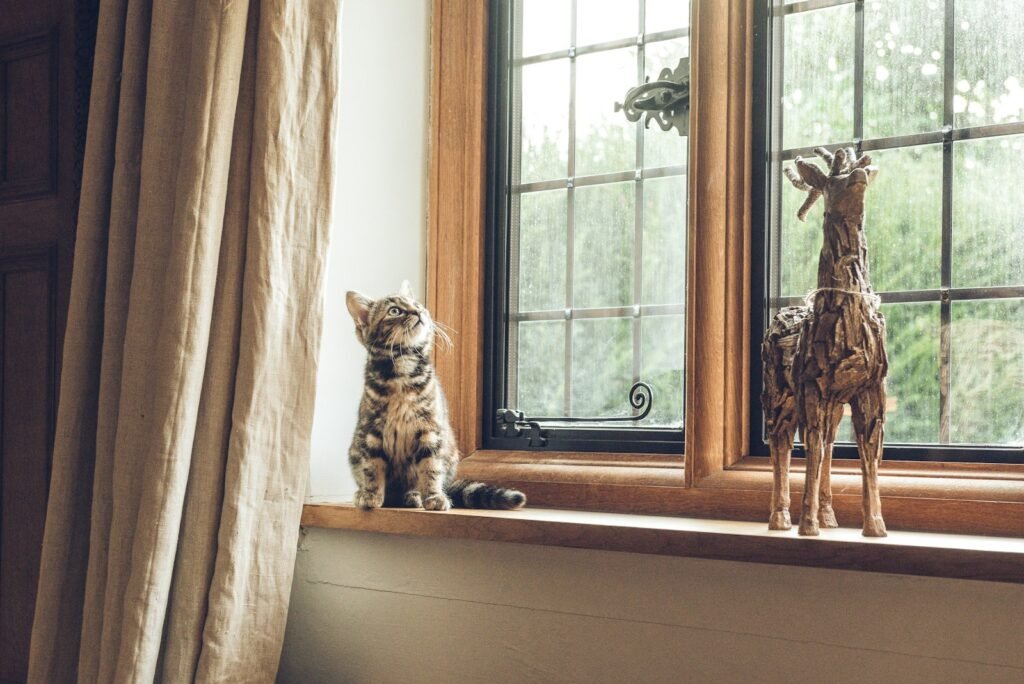
Another fascinating aspect of a cat’s fall is its ability to manage speed as it descends. Cats reach a point called terminal velocity, where constant air resistance prevents further acceleration. Remarkably, due to their light frame and aerodynamic posture, they achieve slower terminal velocities compared to heavier animals. By spreading their limbs, cats increase their surface area, contributing to a safer, cushioned landing.
Instinct vs. Experience: Learning in the Early Stages
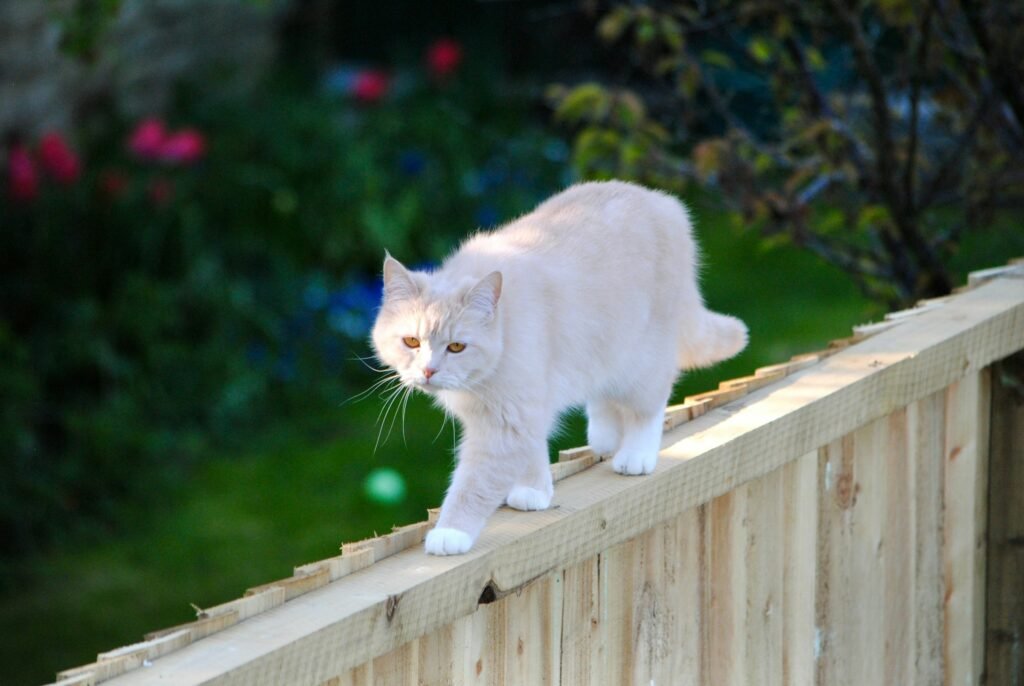
While the righting reflex is instinctual, experience enhances the precision of a cat’s landing. Young kittens will often be seen practicing their leaps and falls during play. This rehearsal helps them refine their reflexes and perfect their technique as they grow. An experienced cat can skillfully manage even unexpected falls with agility and ease.
Limitations of the Righting Reflex: Not So Perfect
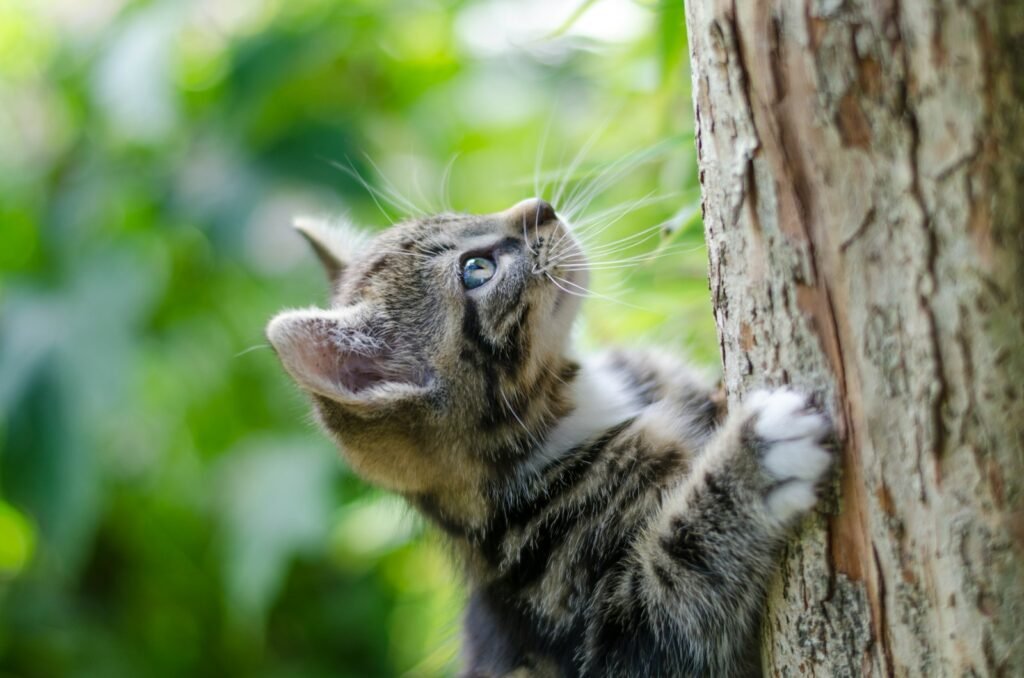
It’s important to note that the righting reflex has its limitations. Falls from great heights, known as high-rise syndrome, can still be dangerous or even fatal to cats. In such cases, although cats can often survive falls from significant heights due to their righting reflex and terminal velocity management, they are not invincible and can suffer serious injuries.
Conclusion: A Perfect Blend of Biology and Physics
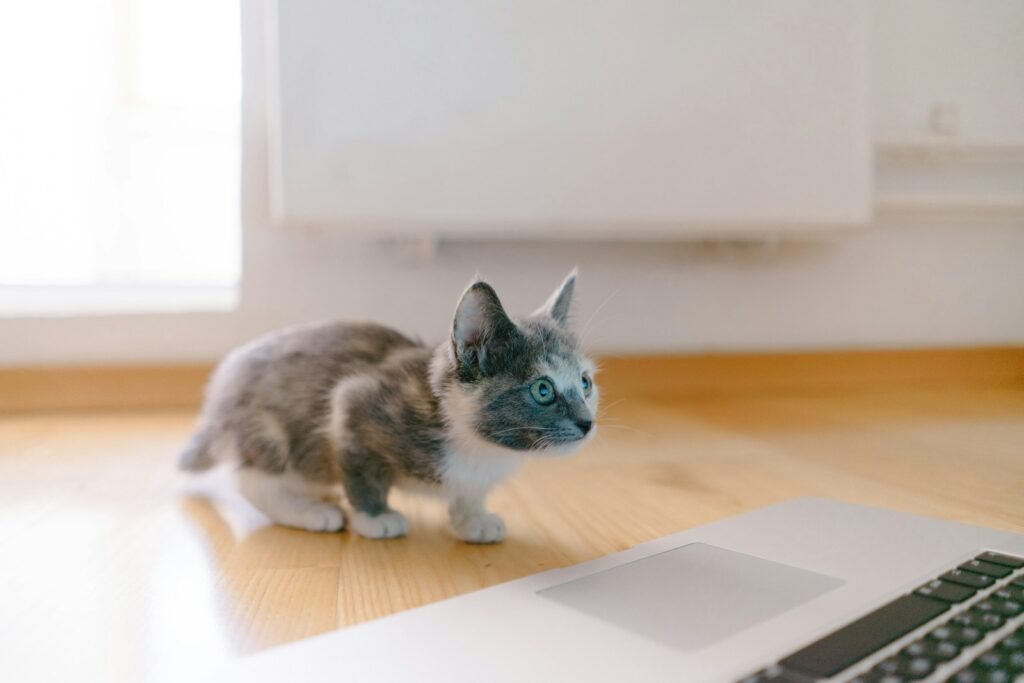
The ability of cats to land on their feet is a remarkable blend of biological design and physical principles. From the anatomy of their flexible spine to the fine-tuned control provided by their vestibular system and whiskers, cats seem perfectly engineered for aerial maneuvers. Understanding this captivating behavior not only enriches our appreciation of our feline companions but also illustrates the complex interplay of nature and science in the animal kingdom.

Growing up traveling and experiencing new cultures and wonders, I have had a passion for nature, adventuring, photography, and videography. I am currently working towards a BSc in Biodiversity and Ecology at Stellenbosch University, and I hope to specialise in Marine Sciences one day.
Please send any feedback to Feedback@animalsaroundtheglobe.com






